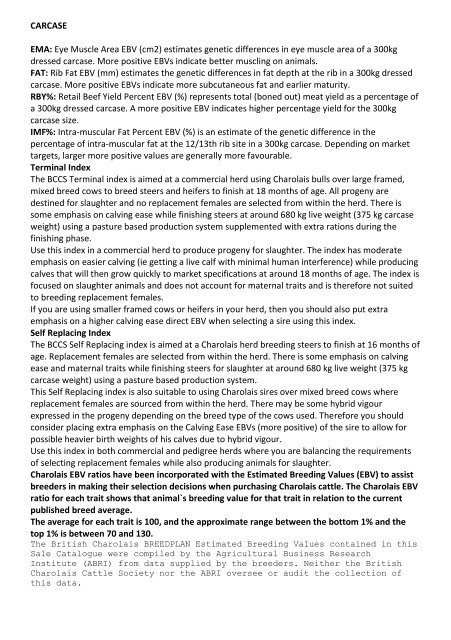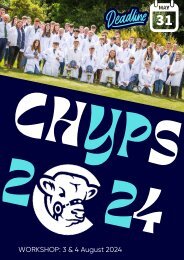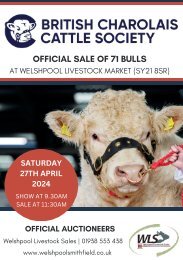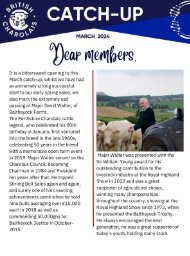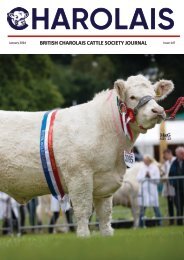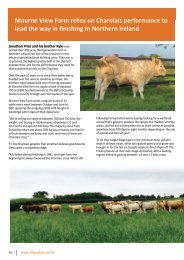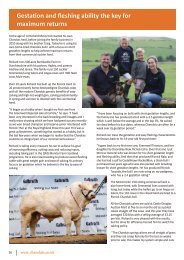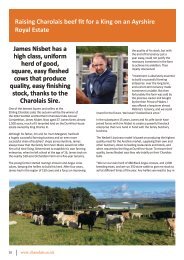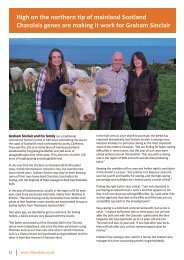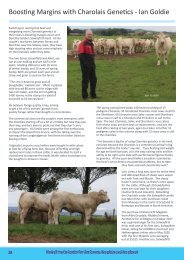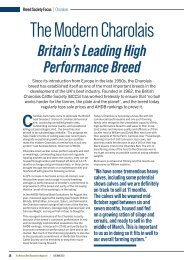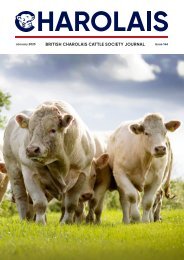Create successful ePaper yourself
Turn your PDF publications into a flip-book with our unique Google optimized e-Paper software.
CARCASE<br />
EMA: Eye Muscle Area EBV (cm2) estimates genetic differences in eye muscle area of a 300kg<br />
dressed carcase. More positive EBVs indicate better muscling on animals.<br />
FAT: Rib Fat EBV (mm) estimates the genetic differences in fat depth at the rib in a 300kg dressed<br />
carcase. More positive EBVs indicate more subcutaneous fat and earlier maturity.<br />
RBY%: Retail Beef Yield Percent EBV (%) represents total (boned out) meat yield as a percentage of<br />
a 300kg dressed carcase. A more positive EBV indicates higher percentage yield for the 300kg<br />
carcase size.<br />
IMF%: Intra-muscular Fat Percent EBV (%) is an estimate of the genetic difference in the<br />
percentage of intra-muscular fat at the 12/13th rib site in a 300kg carcase. Depending on market<br />
targets, larger more positive values are generally more favourable.<br />
Terminal Index<br />
The BCCS Terminal index is aimed at a commercial herd using <strong>Charolais</strong> bulls over large framed,<br />
mixed breed cows to breed steers and heifers to finish at 18 months of age. All progeny are<br />
destined for slaughter and no replacement females are selected from within the herd. There is<br />
some emphasis on calving ease while finishing steers at around 680 kg live weight (375 kg carcase<br />
weight) using a pasture based production system supplemented with extra rations during the<br />
finishing phase.<br />
Use this index in a commercial herd to produce progeny for slaughter. The index has moderate<br />
emphasis on easier calving (ie getting a live calf with minimal human interference) while producing<br />
calves that will then grow quickly to market specifications at around 18 months of age. The index is<br />
focused on slaughter animals and does not account for maternal traits and is therefore not suited<br />
to breeding replacement females.<br />
If you are using smaller framed cows or heifers in your herd, then you should also put extra<br />
emphasis on a higher calving ease direct EBV when selecting a sire using this index.<br />
Self Replacing Index<br />
The BCCS Self Replacing index is aimed at a <strong>Charolais</strong> herd breeding steers to finish at 16 months of<br />
age. Replacement females are selected from within the herd. There is some emphasis on calving<br />
ease and maternal traits while finishing steers for slaughter at around 680 kg live weight (375 kg<br />
carcase weight) using a pasture based production system.<br />
This Self Replacing index is also suitable to using <strong>Charolais</strong> sires over mixed breed cows where<br />
replacement females are sourced from within the herd. There may be some hybrid vigour<br />
expressed in the progeny depending on the breed type of the cows used. Therefore you should<br />
consider placing extra emphasis on the Calving Ease EBVs (more positive) of the sire to allow for<br />
possible heavier birth weights of his calves due to hybrid vigour.<br />
Use this index in both commercial and pedigree herds where you are balancing the requirements<br />
of selecting replacement females while also producing animals for slaughter.<br />
<strong>Charolais</strong> EBV ratios have been incorporated with the Estimated Breeding Values (EBV) to assist<br />
breeders in making their selection decisions when purchasing <strong>Charolais</strong> cattle. The <strong>Charolais</strong> EBV<br />
ratio for each trait shows that animal`s breeding value for that trait in relation to the current<br />
published breed average.<br />
The average for each trait is 100, and the approximate range between the bottom 1% and the<br />
top 1% is between 70 and 130.<br />
The British <strong>Charolais</strong> BREEDPLAN Estimated Breeding Values contained in this<br />
Sale Catalogue were compiled by the Agricultural Business Research<br />
Institute (ABRI) from data supplied by the breeders. Neither the British<br />
<strong>Charolais</strong> Cattle Society nor the ABRI oversee or audit the collection of<br />
this data.


